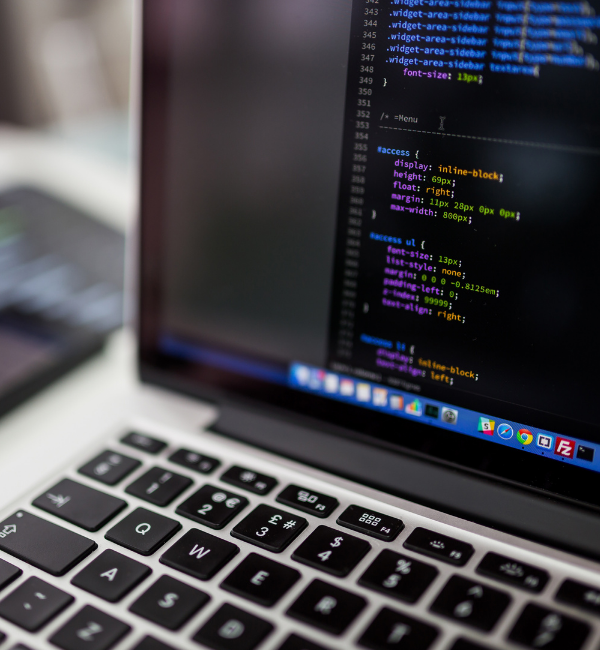Secret Handshake


Learners develop computational thinking skills through creating a secret handshake.
What You Need
- Writing tool (e.g., pen or pencil)
- Paper
- Movement card template, pre-cut, in advance, by facilitator (one per group)*
*NOTE! There are two provided Movement Card templates to cater to different audiences—one for Grades 1-3 and one for Grades 4-6. Be sure to select the right one for your audience!
Guide:
Safety Notes
Ensure you are familiar with Let's Talk Science's precautions with respect to safe delivery of outreach to youth.
What To Do
- Teach learners the movements to use in the secret handshake: the wave, ice-cream cone and the jellyfish. NOTE! There is no right or wrong way—facilitators can create whatever movements work for their audience, as long as the movements are the same for each item in the handshake.
- Ask the educator to spilt learners into pairs.
- Give each group a pre-cut set of movement pictures, blank box(es) and numbers/repetitions.
- Ask one learner from each pair to arrange the movement pictures in whatever way they want; this is their secret handshake. Do not show their partners.
- Once partner one has created their secret handshake, ask them to teach partner two.
- Once complete, have the team members switch, to allow the other member of the pair to create and teach a new secret handshake.
- (Optional) Once they’ve mastered the basic handshake, encourage learners to get creative with their handshakes by:
- Adding repetitions of a certain movement, or of the whole sequence.
- Adding numbers to the picture sequence to indicate how many times the movement should be repeated in the sequence.
- Partners can take turns creating and teaching as many different handshakes as time permits.
Discovery
By creating and teaching secret handshakes, learners are taking a larger activity (creating a whole secret handshake) and breaking it into smaller components of individual movements, to make it easier to understand. This is called decomposition. When learners can assess challenges by looking at the smaller components, it can make solving bigger problems more manageable and less overwhelming, which makes them more efficient problem solvers!
As technology advances, it is more important than ever that people contribute to the digital world. Building computational thinking skills, such as decomposition, and strengthening computational thinking concepts, like sequences and repetition, better prepares learners for the real and the digital world. By asking questions and then adapting to the answers, learners can ask more precise questions to solve the problem.
The commands created by learners followed a sequence. A sequence can have repeated tasks or tasks that only happen in particular situations. Flowcharts can be used to help understand sequences. Learners gave instructions to perform an action multiple times. This kind of repetition happens a lot in computer programming. Instead of writing out that step multiple times, it can be set up so that it automatically repeats (loops) a certain number of times.
Critical thinking involves addressing complex problems by interpreting information to make informed judgments. Being able to think critically is an important skill to have that helps learners become constructive citizens and interact with the world in meaningful ways.
- Try adding a fourth movement to handshakes, by drawing a new picture in the blank box(es) and inserting it into the sequence.
- Encourage partners to combine handshakes.
- Use brackets to show repetition(s).
What's Happening?
By creating and teaching secret handshakes, learners are taking a larger activity (creating a whole secret handshake) and breaking it into smaller components of individual movements, to make it easier to understand. This is called decomposition. When learners can assess challenges by looking at the smaller components, it can make solving bigger problems more manageable and less overwhelming, which makes them more efficient problem solvers!
Why Does It Matter?
As technology advances, it is more important than ever that people contribute to the digital world. Building computational thinking skills, such as decomposition, and strengthening computational thinking concepts, like sequences and repetition, better prepares learners for the real and the digital world. By asking questions and then adapting to the answers, learners can ask more precise questions to solve the problem.
The commands created by learners followed a sequence. A sequence can have repeated tasks or tasks that only happen in particular situations. Flowcharts can be used to help understand sequences. Learners gave instructions to perform an action multiple times. This kind of repetition happens a lot in computer programming. Instead of writing out that step multiple times, it can be set up so that it automatically repeats (loops) a certain number of times.
Critical thinking involves addressing complex problems by interpreting information to make informed judgments. Being able to think critically is an important skill to have that helps learners become constructive citizens and interact with the world in meaningful ways.
Investigate Further
- Try adding a fourth movement to handshakes, by drawing a new picture in the blank box(es) and inserting it into the sequence.
- Encourage partners to combine handshakes.
- Use brackets to show repetition(s).